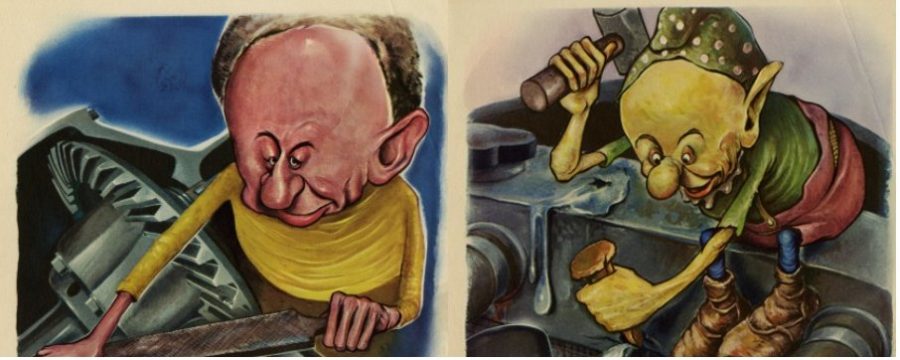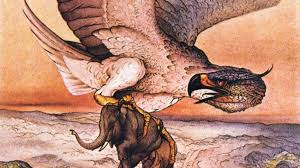Mythical Monsters: the Gremlin
It’s not a bug; it’s a feature.
Before glitches and computer viruses, there were gremlins, tiny imps that feasted upon the wires and coils of planes. Gremlins are considered a modern myth, first appearing in the 1920s as airmen’s slang for an unidentified mechanical failure. There is some debate about the origin of the term itself; some claim that it has its roots in the Old English verb gremain, meaning ‘to vex,’ but it is far more likely to be a portmanteau of ‘the Brothers Grimm’ and ‘fremlin,’ an English beer. Still others connect the word with the Kremlin, as many pilots claimed that their planes were ‘infested’ with them only after flying over the Soviet Union.
The nature of gremlins has often been disputed. They are often portrayed as mischievous, but without real malice; while they enjoyed annoying pilots with their meddling, they would never go so far as to cause a critical failure or fatal accident. However, during the bleaker stages of World War II when it appeared that Great Britain would fall, a rumor gained traction that gremlins were Axis sympathizers. This led to a federally-sanctioned statistical investigation of whether or not Allied planes were more likely to experience an inexplicable mechanical failure than Axis planes. The result? Gremlins appeared to be neutral in the conflict, targeting both sides equally for their pranks.
This did not mean that the gremlins did not have an effect on the outcome of the war. A myth perpetuated principally by the pilots of the Royal Air Force, psychologists believe that the use of the imps as scapegoats kept up morale, uniting pilots both against the pesky troublemakers and their real foes. Gremlins gave them something to blame for their mechanical misfortunes other than fate or random chance; having ascribed a ‘cause’ to any of the dangerous failures that the planes were prone to kept them from fearing to fly. Psychologists also believe that the pilots who swore to have seen a gremlin in the flesh may have an ounce of truth to their tale: it is likely that “the stress of combat and the dizzying heights” could cause the pilot to hallucinate tiny creatures crawling around inside the cockpit. Alternately, the manifestation of gremlins could simply be a coping mechanism—consciously or subconsciously—of a war-torn mind, a false memory to block out the horrors that the pilots must have witnessed.
The legend of the gremlin might never have taken off outside the RAF had not one pilot-turned-writer used them for inspiration to write his famous book. Roald Dahl of the 80 Squadron of the Royal Air Force published his novel The Gremlins in 1943; more than forty years later, Steven Spielberg would use the novel as the basis for the movie that terrified us all as kids.
While they make for amusing stories and great material for WWII propaganda cartoons, the gremlins are, above all, a historical anecdote born out of one of the darkest times in human history. Adversity is the catalyst for stories, yet there is something oddly reassuring about the tenacity of tall tales in the midst of a time of struggle and strife. All monsters—real or fantastical—have something to teach us, whether it be to show kindness to beggars or to prize and hone your wits to be able to escape from a bad situation. In the gremlins’ case, take your problems one by one and you can overcome them, but to compound them into a sea of woe will surely overwhelm you.
And so our journey into the annals of legend must finally come to a close, although there still exists a myriad of magical creatures permeating the natural world. They are yours for the discovery if you dare seek them out, but always beware of what you might find: not all is as it seems. Tread lightly and give no one your name, and you might yet be party to a hidden world where wonder and magic still reign. I am pleased to have brought you Mythical Monsters, but it’s your turn now. Good luck, and fare thee well.








